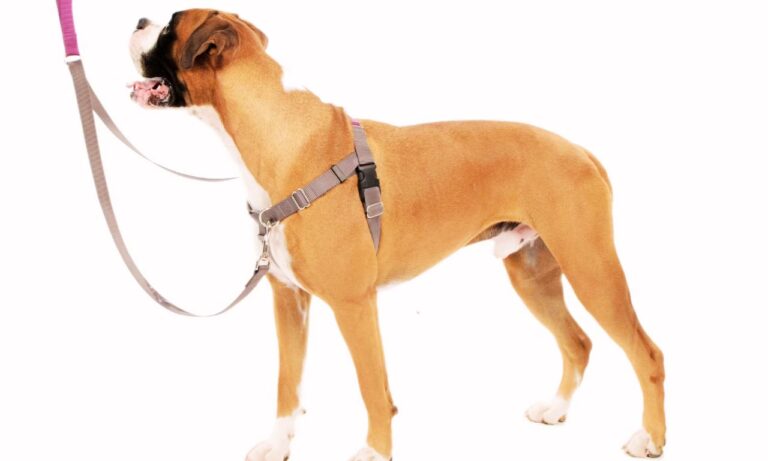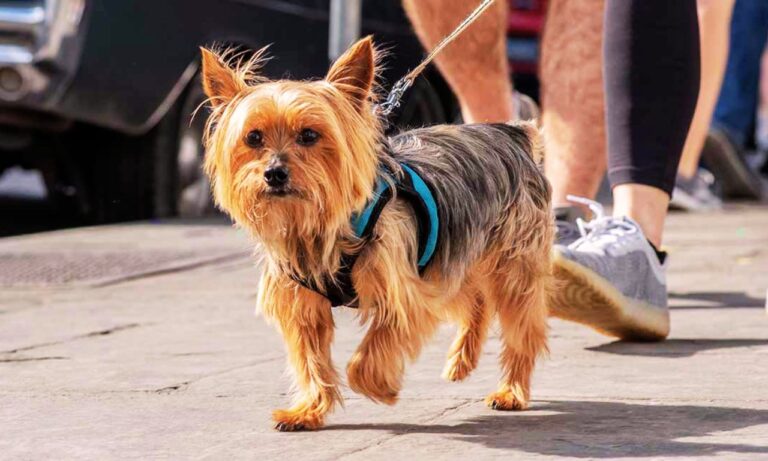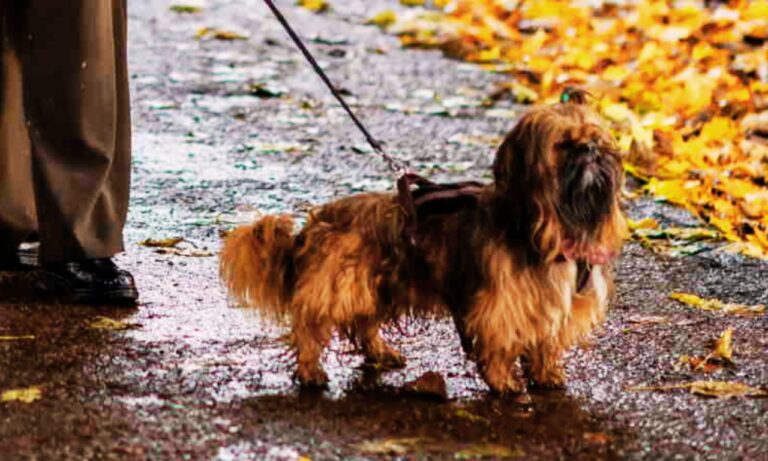St. Bernards are massive, lovable giants known for their strength, loyalty, and gentle temperament. As one of the largest dog breeds, choosing the right collar size for a St. Bernard is crucial to ensure their comfort and safety. So, what size collar for St. Bernard? For detailed guidance on ensuring the perfect collar fit for your St. Bernard, check out the best practices for St. Bernard collar adjustment to keep your dog comfortable and secure.
Whether you are selecting a collar for identification, walking, or training purposes, getting the correct size is vital to avoid injury and discomfort. I’ll discuss everything you need to know about fitting a collar on your St. Bernard, from measuring techniques to choosing the right collar type. For a step-by-step guide on how to wear collar to an Affenpinscher, check out this detailed article to ensure a comfortable and secure fit for your dog.
Blog Highlights
ToggleWhat is the Size and Neck Structure of St. Bernards?
St. Bernards are large dogs, typically weighing between 120 and 180 pounds, with males sometimes exceeding 200 pounds. Their height ranges from 26 to 30 inches at the shoulder for females and up to 35 inches for males. Due to their sheer size and muscular necks, finding the right collar size is different from what you’d expect for smaller or medium-sized dogs.

So, what size collar for St. Bernard? On average, the neck size of a fully grown St. Bernard can range from 26 to 32 inches, but every dog is unique, so it is crucial to measure your dog’s neck properly for a custom fit.
A collar that is too tight can cause breathing issues or discomfort, while a collar that is too loose might slip off, making it ineffective during walks or training. Check out the best dog collars for Border Collie to find durable, stylish, and comfortable options for your active dog.
Measuring Your St. Bernard’s Neck for a Collar
Before buying a collar, you need to take accurate measurements of your St. Bernard’s neck. Here’s a step-by-step guide:
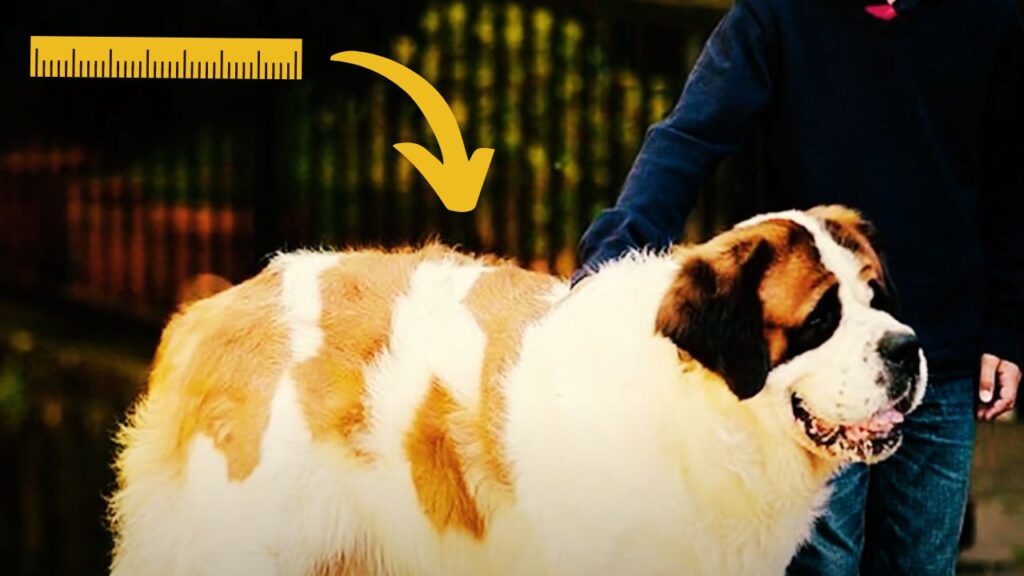
Tools Needed:
- A soft measuring tape (flexible tape is better than rigid rulers).
- Alternatively, use a string and then measure it against a ruler.
Steps to Measure:
- Wrap the Tape Around the Neck: Place the measuring tape around the thickest part of your St. Bernard’s neck, which is typically located just below the base of the ears and above the shoulders.
- Snug Fit: Make sure the measuring tape is snug but not tight. You should be able to comfortably fit two fingers between the tape and your dog’s neck to ensure there’s enough room for the collar to sit comfortably without choking.
- Add Two Inches: To the measured number, add an extra two inches to ensure the collar will not be too tight and allow for adjustments.
For example, if your St. Bernard’s neck measures 28 inches, you should look for a collar that fits neck sizes between 28 and 30 inches. For guidance on choosing the right collar size for an Airedale puppy, check out this detailed guide.
Puppy Growth Considerations:
If you’re measuring a St. Bernard puppy, keep in mind that they grow quickly during the first year. It is advisable to buy an adjustable collar that can accommodate their rapid growth. Start with a smaller size, then adjust or replace it as your puppy grows into adulthood.
Types of Collars Suitable for St. Bernards
There are various types of collars, each suited for different purposes. Due to their size and strength, St. Bernards require collars that offer durability and control, without compromising on comfort. Here’s a breakdown of the most common collar types for your St. Bernard:
a. Flat Collars
Description: Flat collars are the most common type of collar used for everyday wear. These collars come in various materials, such as nylon, leather, or fabric, and they feature a buckle or a snap closure.

Benefits:
- Ideal for attaching ID tags.
- Available in padded designs to enhance comfort for large breeds.
- Simple to put on and remove.
Best For: Daily wear and light walking.
b. Martingale Collars
Description: Martingale collars are designed to prevent dogs from slipping out of their collars. These collars tighten slightly when the dog pulls but do not cause choking. For larger breeds like St. Bernards, martingale collars provide extra control without causing harm to their thick necks. For insights on whether Airedales are good off-leash, explore this comprehensive article.

Benefits:
- Provides more control without choking.
- Perfect for training purposes.
- Prevents dogs from backing out of the collar.
Best For: Training and walking in busy or high-traffic areas.
c. Harnesses
Description: While not technically a collar, harnesses are a popular choice for large dogs like St. Bernards. They distribute pressure across the dog’s chest and shoulders rather than the neck, reducing the risk of injury or discomfort during walks or strenuous activities.

Benefits:
- Protects the neck by distributing force evenly.
- Provides more control, especially for strong dogs prone to pulling.
- Ideal for hiking, running, or long walks.
Best For: Long walks, hiking, and dogs prone to pulling.
d. Prong Collars
Description: Prong collars, also known as pinch collars, are designed for training purposes, particularly for large and strong dogs. They consist of metal prongs that apply pressure evenly around the dog’s neck when they pull. However, these collars should only be used under professional guidance as improper use can lead to injury.
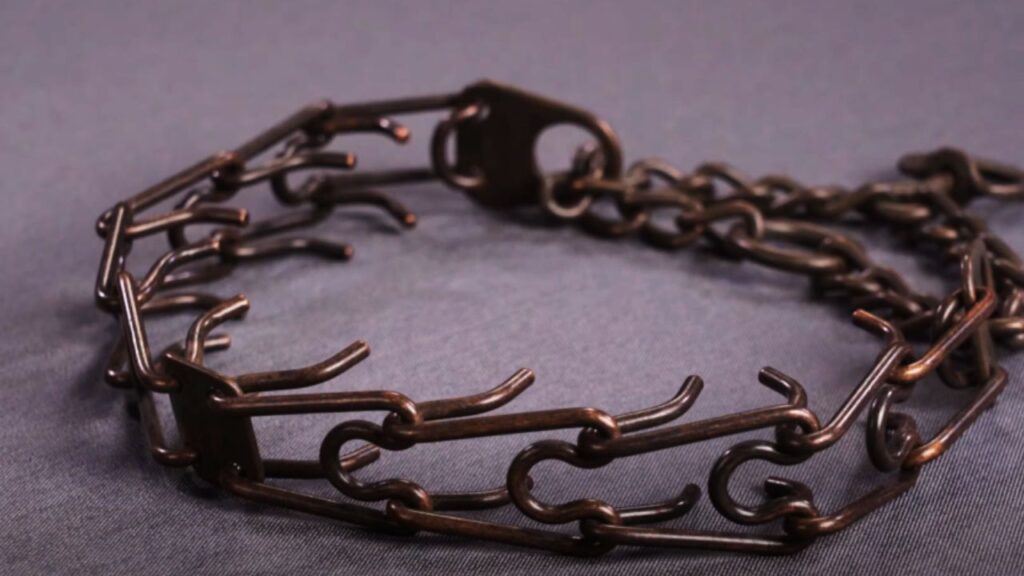
Benefits:
- Provides immediate control for training.
- Should only be used under professional supervision.
Best For: Temporary training purposes with professional guidance.
e. Breakaway Collars
Description: Breakaway collars are designed to release automatically if too much pressure is applied, reducing the risk of choking if the collar gets caught on something. This feature makes them ideal for indoor use or in situations where the dog is unsupervised. Discover the best collars for Siberian Huskies for both style and comfort.
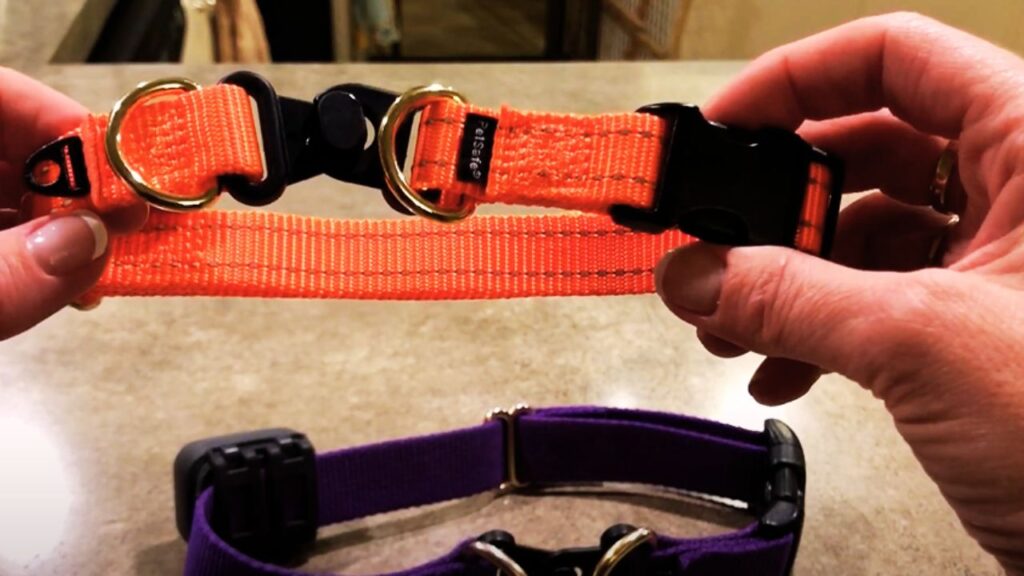
Benefits:
- Prevents choking accidents.
- Ideal for dogs left unsupervised at home.
Best For: Safety purposes during unsupervised play.
Choosing the Right Collar Material
The material of the collar significantly impacts both the comfort of your dog and the longevity of the collar itself. Here are the most common materials used in collars for St. Bernards:
a. Nylon Collars
Description: Nylon collars are lightweight, affordable, and come in a variety of colors and designs.
Benefits:
- Water-resistant and easy to clean.
- Affordable and available in multiple designs.
- Suitable for daily wear.

Pros: Lightweight, colorful, and affordable.
Cons: May fray or wear out with rough use.
b. Leather Collars
Description: Leather collars are durable, long-lasting, and comfortable for large dogs. They tend to become softer with use and are often padded for extra comfort. Learn how to put a collar on a Husky with these practical tips.
Benefits:
- Durable and strong, making them perfect for large breeds.
- Offers a classic, stylish look.
- Comfortable for long-term wear.

Pros: Durable, long-lasting, and comfortable.
Cons: Requires more maintenance and can be expensive.
c. Biothane Collars
Description: Biothane is a synthetic material that combines the strength of nylon with the appearance and flexibility of leather. It is waterproof, durable, and easy to clean.
Benefits:
- Water-resistant, making it ideal for outdoor adventures.
- Highly durable and resistant to chewing or wear.
- Easy to clean and maintain.
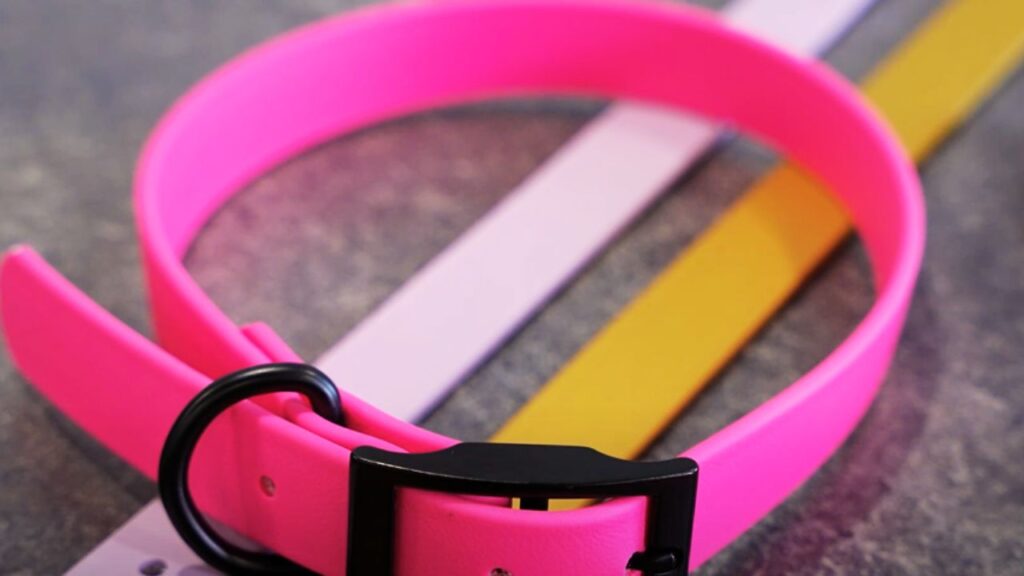
Pros: Water-resistant, durable, and easy to clean.
Cons: Fewer design options compared to nylon or leather.
Ensuring the Collar Fits Safely and Comfortably
Once you’ve chosen the right collar type and material, it’s essential to ensure the collar fits correctly. A collar that is too tight can cause discomfort or injury, while a collar that is too loose can slip off, especially for active dogs like St. Bernards.
a. The Two-Finger Rule
To ensure a safe fit, you should be able to comfortably slide two fingers between the collar and your dog’s neck. This rule ensures that the collar is snug but not too tight. Find out the best collars for Cane Corsos to suit their unique needs.
b. Regularly Check the Fit
St. Bernards, especially puppies, can experience weight changes over time. Regularly check the fit of your dog’s collar to ensure it hasn’t become too tight or too loose. Adjust the collar size as needed, or switch to a new collar as your dog grows.
c. Proper Collar Position
Ensure the collar sits at the base of your dog’s neck, just below the ears and above the shoulders. This positioning provides maximum control during walks and ensures the collar doesn’t slip off.
d. Monitor for Signs of Discomfort
Pay attention to signs that your St. Bernard might be uncomfortable with their collar, such as excessive scratching, rubbing, or visible irritation around the neck. If you notice any of these signs, try loosening the collar or switching to a different type.
Additional Safety Features to Consider
Incorporating additional safety features into your St. Bernard’s collar can enhance both their comfort and your control:
a. Reflective Strips
Reflective collars are an excellent choice for walking your St. Bernard at night or in low-light conditions. The reflective material increases visibility, keeping both you and your dog safe during evening walks.
b. Quick-Release Buckles
Quick-release buckles allow you to remove the collar quickly in case of emergency, preventing accidents or injuries if the collar gets caught on something.
c. Personalized Collars
Adding your St. Bernard’s name and your contact information directly to the collar through embroidery or engraving is a smart idea. This way, if your dog gets lost, they can be quickly returned to you. Explore the Cane Corso growth and weight chart and nutrition plans.
Wrapping Up:
Choosing the right size collar for your St. Bernard is a crucial aspect of responsible dog ownership. By measuring your dog’s neck accurately, selecting the appropriate collar type, and considering the material, you can provide your St. Bernard with a collar that is both comfortable and functional. Hope so, now you know, what size collar for St. Bernard.
Whether you’re looking for a collar for everyday wear, training, or outdoor activities, always prioritize the fit, material, andChoosing the right collar size for your St. Bernard is essential for their comfort, safety, and overall well-being. St. Bernards are known for their massive size, and their collars need to accommodate their large necks while being durable enough to handle their strength.


